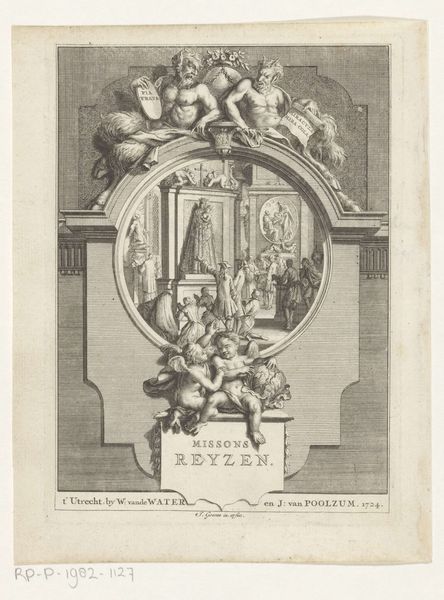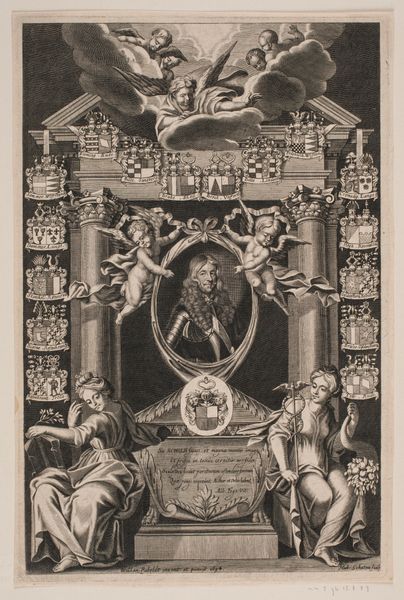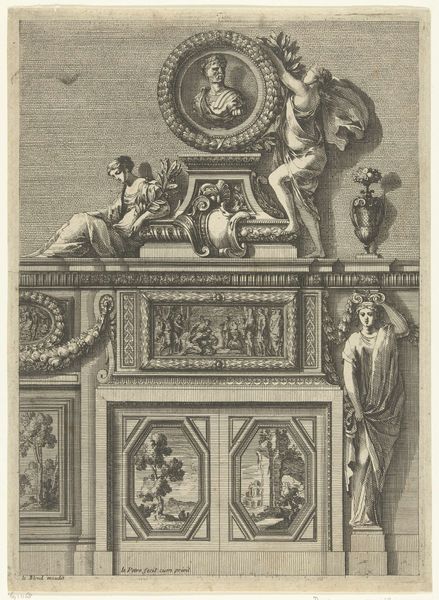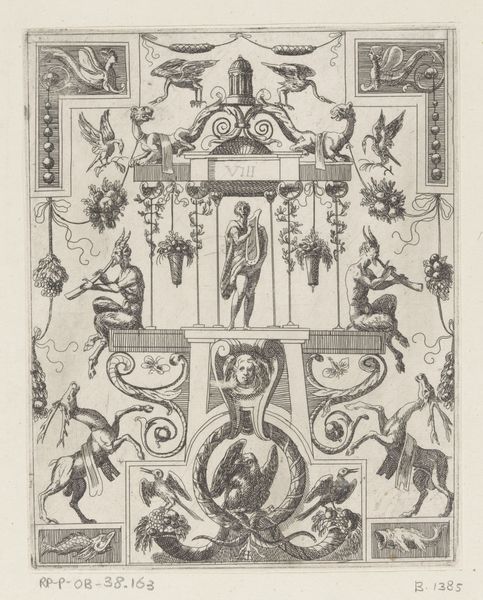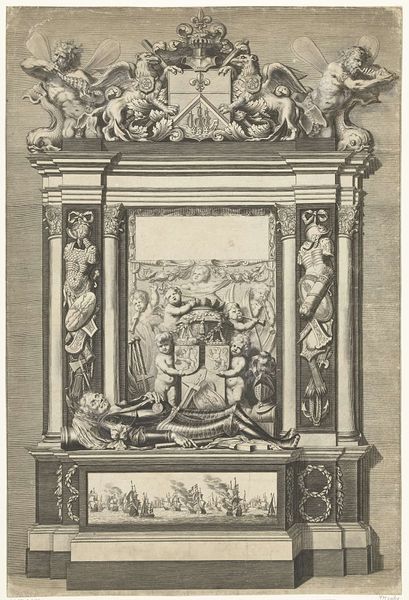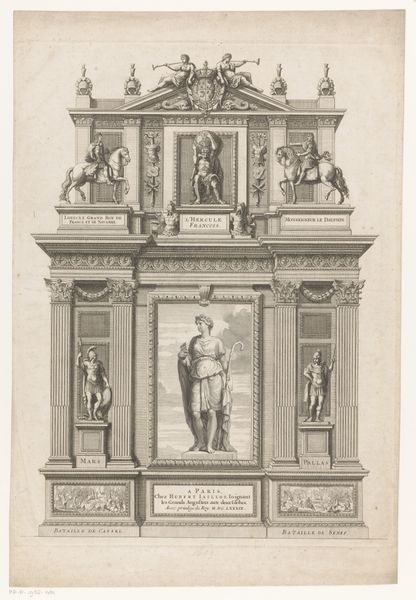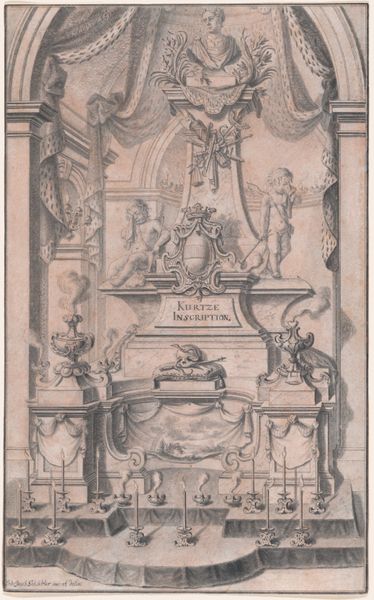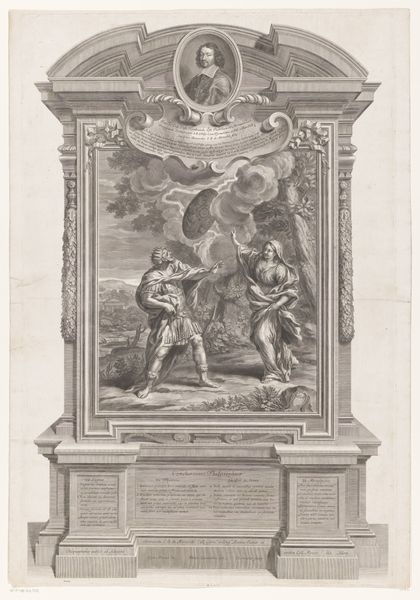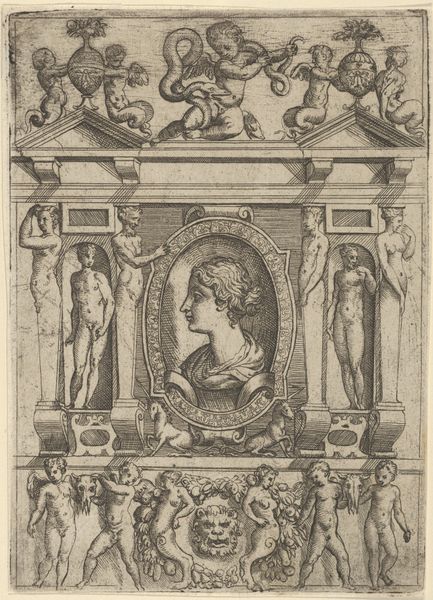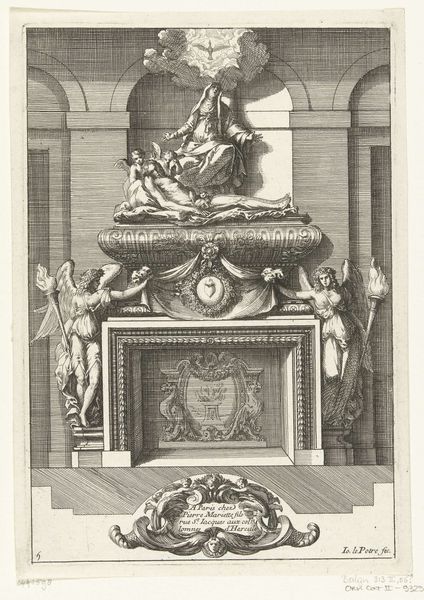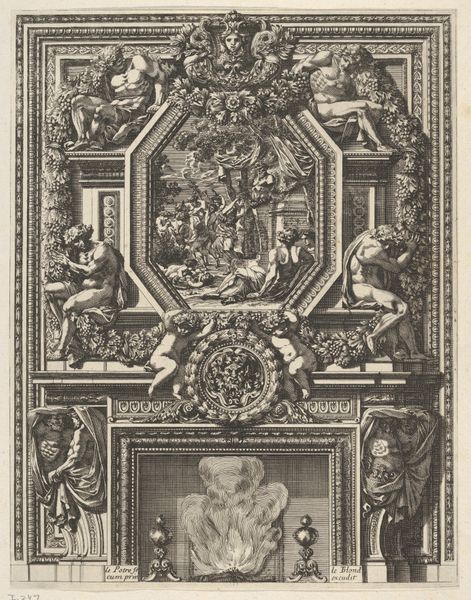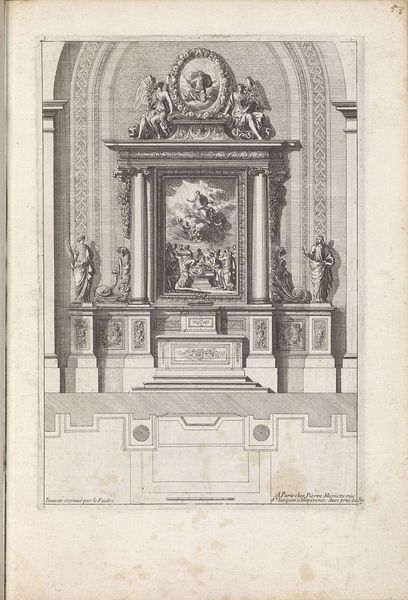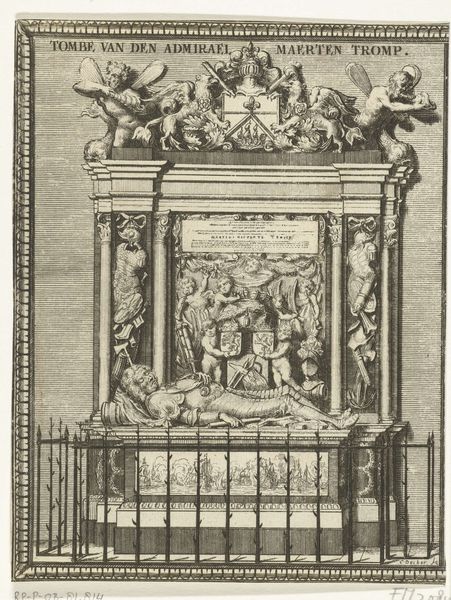
Title page for "Roman Emperors on Horseback" 1582 - 1594
0:00
0:00
drawing, print, engraving
#
portrait
#
drawing
#
allegory
#
animal
# print
#
perspective
#
figuration
#
form
#
11_renaissance
#
horse
#
men
#
line
#
history-painting
#
academic-art
#
engraving
Dimensions: Plate: 13 1/8 × 8 11/16 in. (33.4 × 22.1 cm) Sheet: 13 7/8 × 11 13/16 in. (35.2 × 30 cm)
Copyright: Public Domain
Editor: Here we have Adriaen Collaert's title page for "Roman Emperors on Horseback," created sometime between 1582 and 1594. It’s an engraving, and I’m immediately struck by how densely packed it is with allegorical figures and symbols. How do you interpret this complex layering of imagery? Curator: For me, this isn’t just a title page; it's a visual argument about power and authority in the late 16th century. Notice how classical imagery—the Roman she-wolf, the eagle, even the architectural setting—is deployed. It's not mere decoration; it's a deliberate invocation of Roman imperial power. The artist, through the commissioner, Phillip Galle, strategically uses historical and mythological symbols to talk about the current political climate. Who gets to claim the legacy of Rome and to what ends? How does that influence perceptions of the legitimacy of power? Editor: That’s a compelling reading. So, the globe positioned centrally beneath the Roman imagery. Would you say that that extends this power dynamic outwards from Rome, perhaps suggesting global dominion? Curator: Precisely! The globe anchors the earthly domain of power, explicitly tying the legacy of Roman emperors to claims of worldly rule in Collaert's time. Ask yourself, who produced this print? For whom was it made? It's not a neutral historical document; it's a highly crafted piece of political propaganda. By emphasizing certain aspects of Roman history and visualizing this ambition of future global leadership, Galle creates a very pointed argument. Editor: I see it now. It’s about constructing an image of legitimate authority by linking current power structures to idealized historical precedents. Thank you! Curator: Absolutely. And, reflecting on that point, let’s consider how artists even today manipulate symbols and historical narratives to create a preferred, even biased, perspective.
Comments
No comments
Be the first to comment and join the conversation on the ultimate creative platform.
